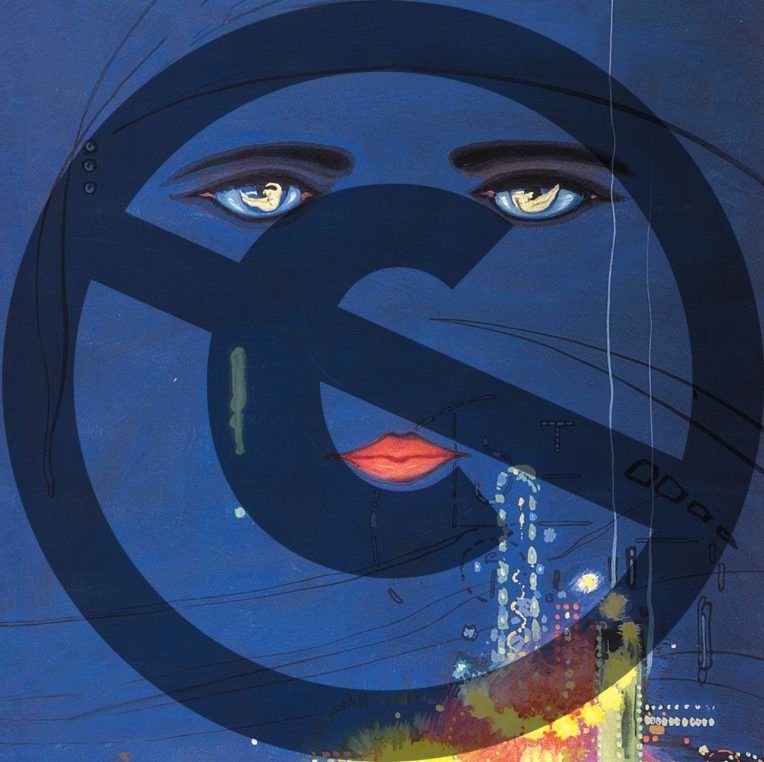On January 1, 2021, U.S. copyright protections expired for thousands of works published in 1925. These materials have now joined Americans’ shared inheritance of creative expression known as the public domain. Some of the literary luminaries entering the public domain this year include F. Scott Fitzgerald’s The Great Gatsby, Virginia Woolf’s Mrs. Dalloway, Ernest Hemingway’s In Our Time, and the Harlem Renaissance anthology The New Negro edited by Alain Locke. The public domain doesn’t just pertain to books, however! Musical compositions by Irving Berlin, Duke Ellington, “Ma” Rainey, “Fats” Waller, and so many others are also now free to perform and adapt, and influential silent films such as Go West starring Buster Keaton and The Freshman starring Harry Lloyd can be publicly screened by anyone in the United States.
Millions of public domain works, including the abovementioned newest additions, are available for download from HathiTrust and the Internet Archive. Digitization and cultural stewardship organizations such as these are committed to holding digital copies of creative works in trust for future generations, often waiting decades for the day when their dark archives can finally be exposed to the light. Last year alone HathiTrust released 49,811 texts written in 1924. Unfortunately, as Jennifer Jenkins of Internet Archive noted on Public Domain Day 2020, “the fact that [public domain] works… are legally available does not mean they are actually available. After 95 years, many of these works are already lost or literally disintegrating (as with old films and recordings), evidence of what long copyright terms do to the conservation of cultural artifacts.” Indeed, much of the pre-internet 20th century is today considered a dead zone for digital humanities research because such a large percentage of the creative expression of that period is now orphaned, out-of-print, or otherwise restricted by copyright.
This needn’t be the fate of your works, however; you can dedicate your own copyrightable materials to the public domain right now! By applying a Creative Commons CC0 license when publishing content online, you give up unwanted copyright protections and help ensure that your art, films, music, or writings will be referenced and circulated for years to come instead of languishing behind paywalls. Need help getting started? “Milner librarians are available to help you identify open access and public domain material, or to help you publish your own work in the public domain,” says Institutional Repository Manager and Scholarly Communications Librarian Anne Shelley. “Milner also manages Illinois State University’s institutional repository, ISU ReD, in an effort to make research and creative materials available online to anyone, for free.”
Institutional repositories, Shelley explains, “collect, preserve, and freely share the scholarly output of an institution as a whole, including deposited works by its faculty, staff, alumni, and current student body. They provide secure, long-term storage and access to contributors’ digital assets in a user-friendly system designed to make this material easily discoverable by search engines such as Google.” Shelley is happy to assist members of the ISU community with depositing their publications, research data, and other digital assets in ISU ReD. Those wishing to do so should email ISUReD@ilstu.edu or consult the ISU ReD FAQ for more information.
Additional Reading from the Scholarly Communication Team
- Big Deals and the MIT Framework for Publisher Contracts
- Deceptive publishers begone: Cabell’s Predatory Report is here
- “Create your own” through the public domain
- University Research Symposium hosted in ISU ReD
- A look at the Open Library of Humanities
- Finding Open Access journals and books
- Smithsonian open access
- Reusing others’ work with Creative Commons licenses
- Digitization of historical WGLT program guides informs broadcast history research
- Open Access Digital Theological Library
- Keeping it 100! Celebrating Milner’s contributions to ISU ReD
- How do you make a book free for everyone? Unglue.It
- Open Access publishing options
- Find free scholarly articles using the Unpaywall browser extension
- Historic ISNU enrollment ledgers now online
- Why submit to ISU ReD?
- Explore resources in the public domain
- Lever Press: an open access monograph publisher
- Oh, the places your thesis will go
- Educating Illinois on ISU ReD
- Finding open access resources using OAIster
- Illinois Shakespeare Festival programs now online
- UC library system says “no deal” to Elsevier

